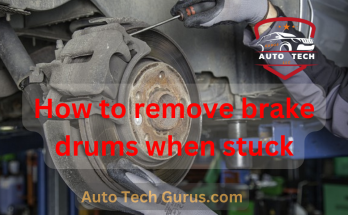How to Flush Brake Fluid with ABS the Right Way
The braking system is one of the most important safety features in a car. If your car has ABS (Anti-lock Braking System), it adds extra safety by preventing the wheels from locking up during braking. ABS uses sensors on each wheel and an ABS module to manage the braking process.
ABS includes brake fluid that travels through brake lines to your wheels. When you press the brake pedal, the brake fluid creates pressure that slows down or stops your car. Over time, the brake fluid can become contaminated with moisture, leading to rust and corrosion, or simply become old and worn out. This affects your car’s braking system.
Here’s a detailed guide to flushing brake fluid with ABS.
Benefits of Regular Maintenance
Regular preventive maintenance checks, including flushing your brake fluid, save you money and keep your car running longer with fewer problems. It’s advisable to flush your brake fluid every 30,000 miles or every two years, as recommended by most car manufacturers.
How to Flush Brake Fluid with ABS
Flushing brake fluid manually without a scan tool can be tedious and requires focus. You might need someone to help. Here’s what you’ll need:
- Carjack (standard jack)
- Jack stand
- Turkey baster
- Drip pan
- Tubing
- Hammer
- Lug wrench
- New brake fluid
Detailed Steps for Flushing Brake Fluid
- Gather Your Tools: Ensure you have all the necessary tools and materials.
- Prepare Your Car: Park the car on a flat surface with good lighting. Turn off the engine and engage the parking brake.
- Lift the Car: Use a carjack to lift the car and place it securely on jack stands. Remove all four wheels to access the brake components.
- Locate the Brake Fluid Reservoir: Open the hood and find the brake fluid reservoir. It’s usually located near the back of the engine bay on the driver’s side.
- Drain the Old Brake Fluid: Use a turkey baster to remove as much old brake fluid as possible from the reservoir. Dispose of the old fluid properly.
- Refill with New Brake Fluid: Fill the reservoir with fresh brake fluid. Make sure to use the type specified in your car’s manual.

Bleed the Brakes:
-
- Start with the wheel farthest from the brake fluid reservoir (usually the rear passenger side).
- Attach a piece of clear tubing to the brake bleeder valve on the brake caliper.
- Place the other end of the tubing into a drip pan.
- Have an assistant pump the brake pedal several times, then hold it down.
- Loosen the bleeder valve to allow old fluid and air to escape.
- Tighten the valve, and have your assistant release the pedal.
- Repeat this process until only clear, new fluid comes out of the tubing.
- Move to the next wheel and repeat the process (rear driver side, front passenger side, front driver side).
- Check for Air Bubbles: Ensure there are no air bubbles in the brake fluid. Air in the brake lines can cause a spongy brake pedal and reduce braking efficiency.
- Top Off the Brake Fluid: After bleeding all the brakes, check the fluid level in the reservoir and top it off as needed.
- Reassemble the car: Put the wheels back on and lower the car from the jack stands.
- Test the brakes: Before driving, pump the brake pedal a few times to build up pressure. Take the car for a short test drive to ensure the brakes are working correctly.
Flushing the brake fluid is crucial for maintaining the braking system’s efficiency. Fresh brake fluid ensures:
- Improved Braking Performance: Fresh brake fluid provides better braking response, enhancing safety.
- Prevention of Corrosion: Contaminated fluid can cause corrosion in the brake lines and components.
- Extended Component Life: Regularly changing the fluid helps extend the life of the brake system components.
Why Brake Fluid Needs to Be Flushed
Over time, brake fluid absorbs moisture from the air, which can lead to:
- Reduced Boiling Point: Moisture lowers the boiling point of the brake fluid, which can cause it to vaporise under high temperatures, leading to brake failure.
- Corrosion: Water in the brake fluid can cause rust and corrosion in the brake lines and components.
- Contamination: Dirt and debris can contaminate the brake fluid, affecting its performance.

Conclusion
Regular preventive maintenance, including flushing the brake fluid, is crucial for your car’s safety and longevity. By following this guide, you can ensure your ABS-equipped braking system remains in top condition. Regularly checking and maintaining your brake fluid helps prevent issues and keeps your car running smoothly and safely.



